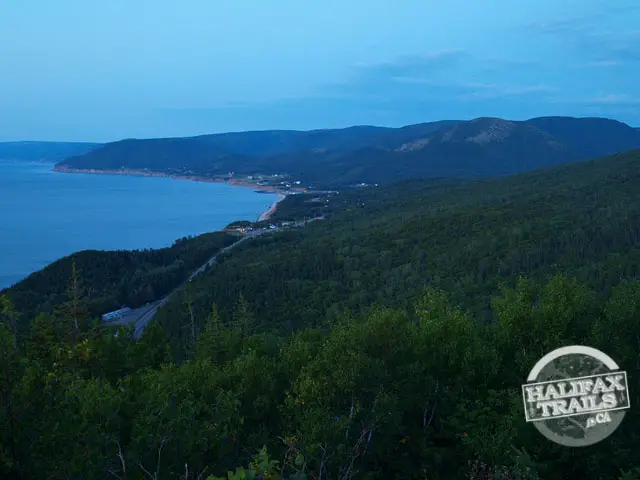It has been a while since I had last visited Cape Breton, and as the summer wound down, I decided I needed to do a few “summery” things before the great weather passed without anything significant to remember it by. My friend’s family has a cottage in East Bay, on the Bras D’ors lake, and it had been a couple of years since both he and I visited.
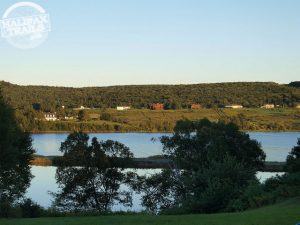 humour and pride present within them all. To this day, the causeway provides a landmark which crosses into beautiful scenery, great people, proud culture and storied history.
humour and pride present within them all. To this day, the causeway provides a landmark which crosses into beautiful scenery, great people, proud culture and storied history.
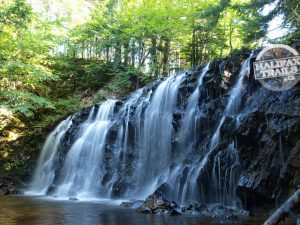 lucky you will stumble on a good old fashion Ceilidh, complete with fiddler, bagpipes and a culture of people who have been partying this way since their Gaelic ancestors settled here in the 1700s.
lucky you will stumble on a good old fashion Ceilidh, complete with fiddler, bagpipes and a culture of people who have been partying this way since their Gaelic ancestors settled here in the 1700s.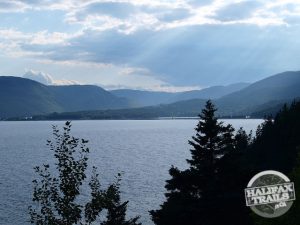 No trip to Cape Breton is complete without exploring the Cabot Trail and the surrounding Highlands National Park. The Cabot Trail is a world-renowned route, first used by European explorer John Cabot, and now a mecca for people looking for a world-class scenic drive. You can quickly see how huge the tourism industry is here, but you also quickly see how it is hugely different. It’s easy to see tourist traps and people looking to make a quick buck at any popular destination around the world. The places are usually run by “friendly” people who are more than happy to take your money. Cape Breton has no shortage of tourist-friendly spots, but these spots are different, and it’s the people that make them different. You begin to realize that the friendliness of the people you encounter is not because they want your money, or because they know you’re a tourist and want you to have a good impression. They’d just as soon have a good conversation or share a joke and treat you the same way they’d treat locals. Being genuine is part of the culture here.
No trip to Cape Breton is complete without exploring the Cabot Trail and the surrounding Highlands National Park. The Cabot Trail is a world-renowned route, first used by European explorer John Cabot, and now a mecca for people looking for a world-class scenic drive. You can quickly see how huge the tourism industry is here, but you also quickly see how it is hugely different. It’s easy to see tourist traps and people looking to make a quick buck at any popular destination around the world. The places are usually run by “friendly” people who are more than happy to take your money. Cape Breton has no shortage of tourist-friendly spots, but these spots are different, and it’s the people that make them different. You begin to realize that the friendliness of the people you encounter is not because they want your money, or because they know you’re a tourist and want you to have a good impression. They’d just as soon have a good conversation or share a joke and treat you the same way they’d treat locals. Being genuine is part of the culture here.
The drive itself is absolutely spectacular, and no videos, photos or descriptions can do it justice. The large rolling green hills and the blue ocean provide some spectacular views. There is no 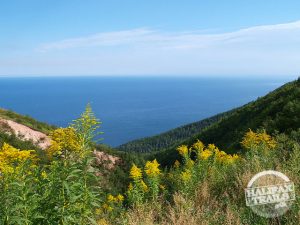 shortage of fantastic places to eat, shop, golf, hike, and stay along the way, as well as many small towns and communities steeped in Gaelic, Native and Acadian history. The town of Cheticamp is a great example of the combination of natural beauty, culture, and history boasted throughout Cape Breton. The town itself is surrounded by green mountains and borders the ocean. The people are French-speaking Acadians and have managed to hold onto and celebrate their language and culture amid an English speaking province. (I highly recommend the seafood chowder, while seated on a patio).
shortage of fantastic places to eat, shop, golf, hike, and stay along the way, as well as many small towns and communities steeped in Gaelic, Native and Acadian history. The town of Cheticamp is a great example of the combination of natural beauty, culture, and history boasted throughout Cape Breton. The town itself is surrounded by green mountains and borders the ocean. The people are French-speaking Acadians and have managed to hold onto and celebrate their language and culture amid an English speaking province. (I highly recommend the seafood chowder, while seated on a patio).
Cape Breton once again left me re-aligned. You really can’t go wrong with a spring/summer or fall visit to Cape Breton. Whether you’re looking to hike, camp, drive, bike, kayak, fish, golf, dine, drink, or just explore, this is where you need to go. Cape Breton is a lot of things to a lot of people, but one thing it is to everyone is beautiful. Cape Breton is equal parts natural and cultural beauty and deserves its designation by National Geographic as one of the top two places in the world for sustainable tourism.
- Major Upgrades Coming To Long Lake Provincial Park - February 26, 2016
- Beginner’s Guide To Snowshoeing - January 27, 2016
- Hiking Preparation 101 - January 12, 2016
